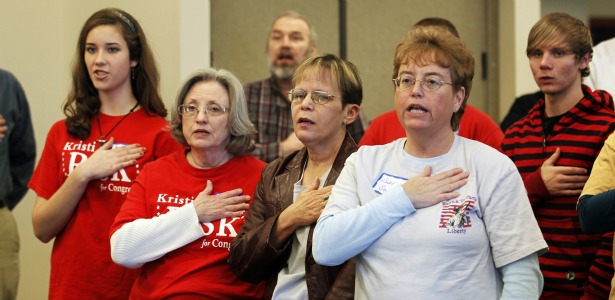Everything You Think You Know About White Working-Class Voters Is Wrong
They're not victims with an entitlement complex. They're not bitterly clinging to religion. And they favor Romney, but not by as wide a margin as he needs to win.

White working-class voters: They're the Holy Grail of the 2012 election. Disaffected with President Obama but skeptical of Mitt Romney, we're told over and over, they're the ultimate swing group. In order to win the election, Romney needs to win about two-thirds of them, the margin Ronald Reagan commanded in 1984, according to Ron Brownstein's analysis.
But who are they and what do they want? A poll out Thursday from the Public Religion Research Institute attempts to put some data to the rampant stereotyping of this group. It finds that many of the most commonly held notions about the white working class -- particularly the image of them as Tea Partiers motivated by culture-war wedge issues and hostile to redistribution of wealth -- aren't true.
Conducted during the first two weeks of August, before the Republican and Democratic conventions, the poll found that while Romney was winning the votes of this group (defined as non-Hispanic whites without college degrees holding non-salaried jobs -- about 36 percent of the overall population), it wasn't by the margin Brownstein and other analysts think he needs. Romney had 48 percent of the white working-class vote to Obama's 35 percent. Broken down by region, things look even worse for Romney: He's beating Obama 62 percent to 22 percent with these voters in the South, where there are few swing states, but barely edging out Obama in the West, 46 percent to 41 percent. Most worrisome of all for Romney, in the battleground-heavy Midwest, he was actually losing the white working-class vote: Obama had 44 percent to Romney's 36 percent.
In light of this week's controversy over Mitt Romney's comments that Americans who don't pay income tax "believe that they are victims" and are "entitled," perhaps the most interesting part of the poll is a series of questions on government benefits. The white working class depends on government assistance more than the population as a whole, yet its members heavily favor smaller government and lower taxes -- and they strongly believe that the poor are too dependent on government programs.
Nearly half of the white working class (46 percent) reported receiving Social Security or disability benefits in the poll, versus 38 percent of the overall population; they were also slightly more likely to receive food stamps and unemployment benefits than the general population. Six in 10 white working-class voters said the federal government should cut back on services and reduce taxes. And three-fourths agreed with the idea that "poor people have become too dependent on government assistance programs." If Romney is able to get past his "47 percent" comments, this may be why: Even those who frequently depend on government strongly dislike the idea of dependency and entitlement.
The white working class has often been depicted as the backbone of the Tea Party, angered by what they perceive as Obama's socialistic policies and, in the president's own memorable phrase, "clinging to guns or religion." But the poll knocks down some of these myths:
* They're not the Tea Party: Only about 13 percent of white working-class voters consider themselves part of the Tea Party, and 34 percent say they share its values. Among college-educated whites, the numbers are about the same -- 10 percent and 31 percent, respectively.
* They're not unusually religious: About half (48 percent) go to church at least once a month, and 60 percent say religion is important to them. That's about the same as the general population. The white working class is more heavily evangelical, however -- 36 percent describe themselves as evangelicals, versus 21 percent of the overall population.
* They're not culture warriors: On the wedge issues of abortion and same-sex marriage, white working-class voters are pretty evenly divided. They favor abortion being legal in all or most cases, 50 percent to 45 percent, and oppose allowing gays to marry, 50 percent to 43 percent. Less than 5 percent of these voters said abortion or gay marriage was the most important issue, as opposed to 53 percent who cited the economy.
* They want to tax the rich: Contra Joe the Plumber, these voters aren't opposed to spreading the wealth around. "In fact, white working-class Americans display a strong strain of economic populism," the report states: 70 percent of them believe the economic system unfairly favors the wealthy, and 62 percent want to raise taxes on incomes over $1 million. And there's a clear reason both candidates have accused each other of favoring outsourcing: 78 percent of white working-class voters blame corporations moving jobs overseas for America's economic woes.
The poll also found there was truth to some white working-class stereotypes. They're more likely to shop at Walmart than Target and less likely than other Americans to have a close friend or family member who is a vegetarian. They are far more likely than those with college degrees to believe that discrimination against whites is a problem and that the government has put too much focus on the problems of minorities. They blame illegal immigrants for taking jobs from American citizens and see this as a significant source of the problems in the economy.
But on the whole, the poll shows, the white working-class vote is as complicated, contradictory, and difficult to define as it is crucial in this election season.